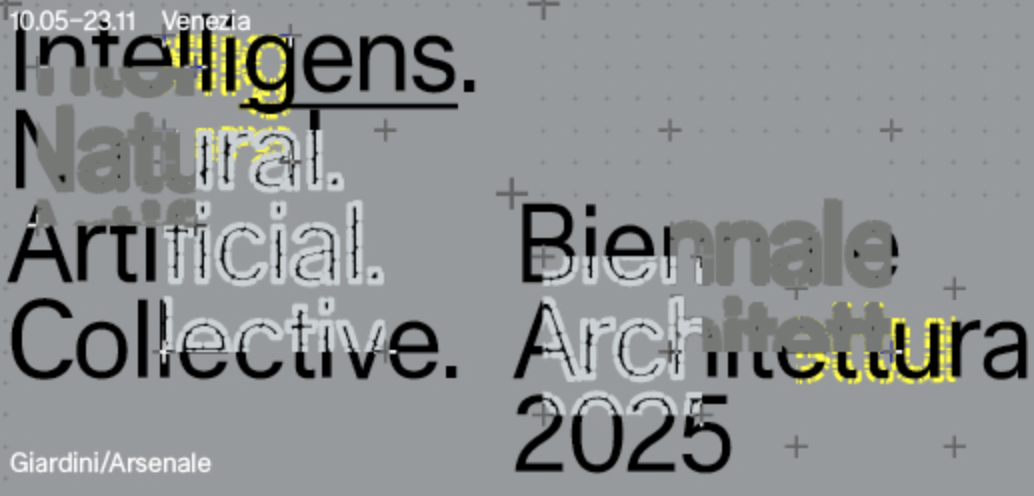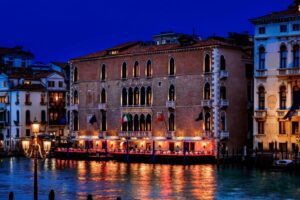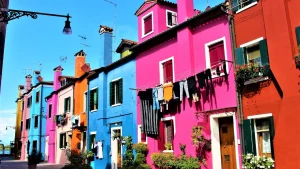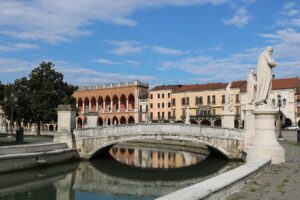Venice Architecture Biennale 2025 — Exploring “Intelligens” with Carlo Ratti
Venice Architecture Biennale 2025: “Intelligens” — A Journey Through the Minds of Tomorrow
Every two years, Venice becomes the epicenter of the world’s most daring ideas in architecture and design. And this year — from May 10 to November 23, 2025 — the city transforms once again, welcoming the 19th International Architecture Exhibition, curated by Italian architect, engineer, and MIT professor Carlo Ratti.
Spread across the Giardini, the Arsenale, and Forte Marghera, the Biennale is more than an exhibition — it’s an invitation to rethink how we build, live, and collaborate in an age of environmental urgency and digital transformation. And for travelers exploring Venice, it’s an experience that fuses art, science, and imagination like nowhere else on Earth.
💡 Embracing “Intelligens”: The Curatorial Vision
The 2025 Biennale’s central theme, “Intelligens. Natural. Artificial. Collective.”, plays on the Latin root of the word “intelligence” — a blend of *inter* (between) and *legere* (to choose or read). Curator Carlo Ratti reimagines intelligence not as a trait owned by humans alone, but as something that flows between systems: nature, machines, and communities.
In Ratti’s words, architecture must “learn, listen, and adapt.” This edition invites visitors to consider how design can respond to climate change, social fragmentation, and technological disruption — not with fear, but with creativity and connection.
Across every pavilion, installation, and prototype, one question echoes: What happens when architecture stops acting alone and starts collaborating with other forms of intelligence?
🌍 The Experience: Where Venice Meets the Future
Few cities embody human ingenuity better than Venice — a floating masterpiece that has balanced on water for over a thousand years. It’s fitting, then, that this lagoon city hosts the world’s leading conversation about adaptation and resilience.
Visitors wander between 300 projects from over 750 contributors, crossing bridges between the past and the future. Here’s what to expect when you dive into “Intelligens.”
🔭 Main Exhibition Highlights
The Biennale unfolds like a labyrinth — part research lab, part playground of ideas. Each installation touches on the intersection between technology, ecology, and emotion. Some of the most talked-about works include:
🤖 Robotic Aperol Spritz Machines
A humorous yet provocative installation where robotic arms prepare cocktails with mechanical precision, raising questions about automation, hospitality, and the rituals that define Italian social life. It’s Venice’s charm — shaken, stirred, and slightly coded.
🏗️ Biodegradable Architecture
Structures grown from bio-materials, fungi, and waste fibers demonstrate how future buildings might decompose gracefully instead of polluting the planet. Expect walls that breathe, roofs that sprout, and materials that tell stories of regeneration.
🧠 AI-Generated Designs
Artificial intelligence joins the drafting table. These digital-human collaborations explore what happens when algorithms learn aesthetic sensibilities — challenging us to ask whether machines can be creative partners, not just tools.
🌦️ Climate Adaptation Projects
From floating cities to amphibious homes, these installations confront the global climate crisis head-on. Venice, forever balancing between water and sky, serves as both inspiration and warning — a city that knows survival requires imagination.
🌐 Notable National Pavilions
National pavilions are where creativity meets identity — where countries reinterpret “Intelligens” through their own cultural lenses. Here are a few not-to-miss highlights:
🇺🇸 United States – “Canal Café”
Diller Scofidio + Renfro transform sustainability into a sensory experience, merging a water-purification system with a functioning espresso bar. The result? A space that serves both caffeine and conscience — a modern metaphor for everyday ecology.
🇧🇭 Bahrain – “Heatwave”
This desert-nation pavilion revisits pre-industrial cooling techniques — courtyards, wind towers, and shade structures — to reimagine sustainable comfort without air-conditioning. It’s an ode to ancestral intelligence in architecture.
🇦🇺 Australia – “Home”
Led by an all-Indigenous design team, Australia’s pavilion is built from rammed earth and infused with storytelling. It explores belonging, land stewardship, and architecture as a bridge between generations.
🇬🇧 United Kingdom – “GBR: Geology of Britannic Repair”
Part confession, part reconstruction — this pavilion digs into Britain’s colonial past, exploring how architecture can repair historical wounds through transparency, craft, and collective reflection.
🇮🇸 Iceland – “Lavaforming”
In true Icelandic fashion, this pavilion looks to volcanic energy for answers. Using lava as a potential building material, it challenges our assumptions about sustainability, geology, and creation itself.
🏛️ Practical Information for Visitors
📍 Venues & Access
- Giardini – Home to the historic national pavilions and open gardens.
- Arsenale – A vast industrial shipyard turned cultural hub, where the central exhibition thrives.
- Forte Marghera – Across the lagoon, featuring experimental projects and public programs, reachable by vaporetto or private boat.
The Arsenale and Giardini are just a 10-minute walk apart — perfect for a leisurely stroll between ideas.
🎟️ Tickets & Passes
To skip the queues, purchase your tickets in advance from the official Biennale website or trusted partners. Options include single-day passes, multi-day access, or full-season accreditation.
♿ Accessibility
All venues provide accessibility information, including wheelchair routes and assistance for visitors with disabilities. Check updated maps before visiting.
🧭 Visitor Tips from a Local Guide
- Plan your route. Each venue is vast — allocate at least half a day per site.
- Use the official apps. The Bloomberg Connects app offers digital maps and artist insights.
- Stay hydrated. Venice can get hot. Bring a reusable bottle — fountains across the city provide free, clean drinking water.
- Wear comfortable shoes. You’ll walk miles on cobblestones — save the stilettos for dinner.
- Mix Biennale with real Venice. After the Arsenale, reward yourself with a glass of prosecco and local cicchetti on our Venice Cicchetti & Wine Tour.
🏗️ Why “Intelligens” Matters in 2025
The 2025 Biennale lands at a crossroads: artificial intelligence is reshaping creativity, climate change is reshaping our cities, and social intelligence is reshaping how we live together. This edition doesn’t simply display architecture — it redefines it as an evolving conversation between species, systems, and ideas.
For Carlo Ratti, the challenge is both philosophical and practical: How can architects design in collaboration with intelligence that already exists — in nature, in machines, and in each other? The result is a show that feels alive — fluid, interactive, and deeply human.
As Venice itself faces rising tides, “Intelligens” becomes a mirror — reflecting the city’s past as a marvel of engineering and its future as a symbol of adaptation. It’s no coincidence that many installations address water, balance, and sustainability. In Venice, architecture is always a survival story.
🎨 Venice Beyond the Biennale
While the Biennale takes center stage, the city around it buzzes with parallel events — exhibitions, talks, and installations in palazzos, galleries, and gardens. Wander through Dorsoduro, Cannaregio, or Castello and you’ll find pop-up exhibitions, contemporary art collectives, and local craftsmanship inspired by the same theme of intelligence and adaptation.
For a deeper connection to the creative spirit of Venice, combine your visit with one of our locally curated experiences:
- Explore Venice Off the Beaten Path – discover quiet corners and artisan workshops beyond the crowds.
- Murano Glass Workshop & Visit – see how ancient craft meets modern design in real Venetian studios.
- Sunset Lagoon Tour – watch the Biennale lights reflect on the water at golden hour.
🌿 Sustainability & Venetian Wisdom
What many visitors don’t realize is that Venice has been practicing “intelligens” for centuries. The lagoon’s architecture — from wooden foundations to natural ventilation — embodies centuries of adaptation. The Biennale builds on that legacy, inviting the world to learn from a city that has always listened to its environment.
Many installations echo this ethos: lightweight materials reduce transport impact; modular structures are reused across future exhibitions. Even the cafés and bookshops at the Arsenale have moved toward zero-plastic initiatives — proof that culture and conservation can coexist beautifully.
🗓️ Planning Your Visit Like a Pro
If you’re visiting Venice for the Biennale and want to make the most of your trip, here’s a local-approved plan:
- Day 1: Start at the Giardini — arrive early to enjoy the national pavilions before the crowds. Lunch near Via Garibaldi or join our Cicchetti Tour for authentic Venetian bites.
- Day 2: Dedicate your day to the Arsenale — its sheer scale is breathtaking. Finish with a sunset prosecco on a private gondola ride.
- Day 3: Cross the lagoon to Forte Marghera for the experimental installations, then end your day with a relaxing bragozzo boat tour around the Biennale lights.
🏁 Conclusion – Venice as a Living Laboratory
The Venice Architecture Biennale 2025 isn’t just an exhibition — it’s a conversation about our shared future. It asks us to think of architecture not as a frozen form but as a living system that learns and collaborates.
Whether you’re an architect, a designer, or simply someone who loves beautiful ideas, “Intelligens” offers a glimpse into what’s possible when creativity and consciousness meet. It’s a reminder that intelligence — in all its forms — is what keeps humanity building, evolving, and dreaming.
And there’s no better city to have that conversation than Venice — where every bridge, brick, and reflection already whispers the story of human imagination.
🎟️ Plan Your Venice Biennale Visit with Tour Leader Venice
Explore Venice with locals who love art, architecture, and the magic of intelligent design.
FAQs About the Venice Architecture Biennale 2025
When and where does the Venice Architecture Biennale 2025 take place?
The 19th International Architecture Exhibition runs from May 10 to November 23, 2025, across Venice’s three main venues — the Giardini, Arsenale, and Forte Marghera. All are easily reached on foot or by vaporetto, with most installations located in the Castello district near the lagoon.
Do I need to buy tickets in advance?
Yes — especially during the opening weeks and weekends. You can book single-day or multi-day passes through the Biennale’s official website or authorized ticket partners. Buying ahead lets you skip long entry lines and plan your itinerary between the Giardini and Arsenale smoothly.
Is the Biennale suitable for non-architects or casual visitors?
Absolutely. The Biennale isn’t just for professionals — it’s a feast of design, technology, and storytelling that anyone can enjoy. Many exhibits are interactive and visual, with guides, maps, and multilingual signage to help visitors of all backgrounds explore “Intelligens” at their own pace.






